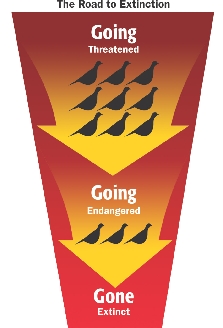Are We Solving the Problem?
The problem of the endangered environment is not new, and over time large groups of plants and animals quickly began to disappear. So, people began to look for ways to protect these important species. In the early 1900s, laws were passed to protect certain animals, but the biggest change came many years later. In 1973, the U.S. government passed the Endangered Species Act. This act lists species that are in danger of becoming extinct, or lost forever. The act makes it illegal to collect or harm any of the species on the list and it also protects the areas where the listed species live.
There is only one way that a species can be added to or removed from the list. Congress must agree to the change. In other words, state representatives must meet, vote, and pass a law or an act.
Many species are already on the list and they can be classified as either “threatened” or “endangered.” A threatened species is less in danger of becoming extinct. An endangered species is most in danger of becoming extinct. A threatened species could, however, become endangered without protection.
Many more plants are endangered than animals. About one out of every ten plants may become extinct.
About 75 percent of the world’s bird species are endangered. More than 60 percent of primates, such as apes and monkeys, are also endangered. Some scientists think as many as 100 species become extinct each day.

A threatened species can become endangered without protection. An endangered species can become extinct.